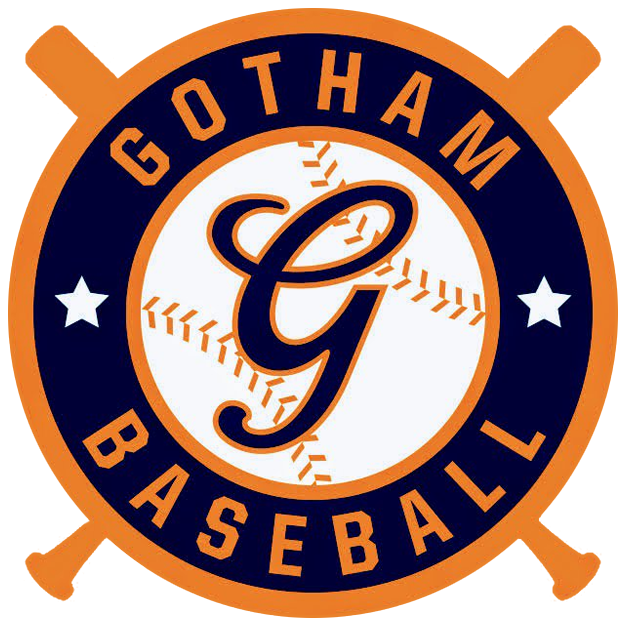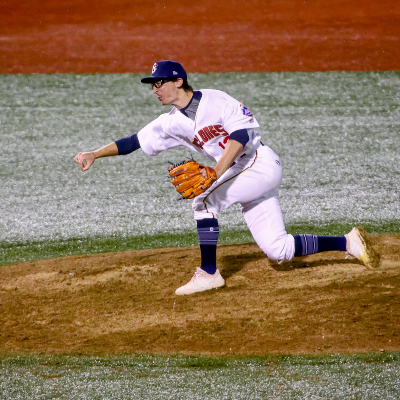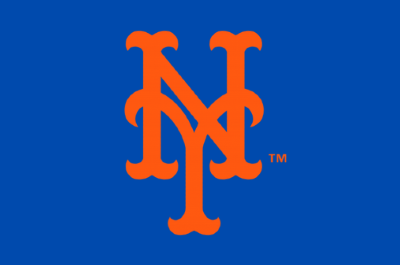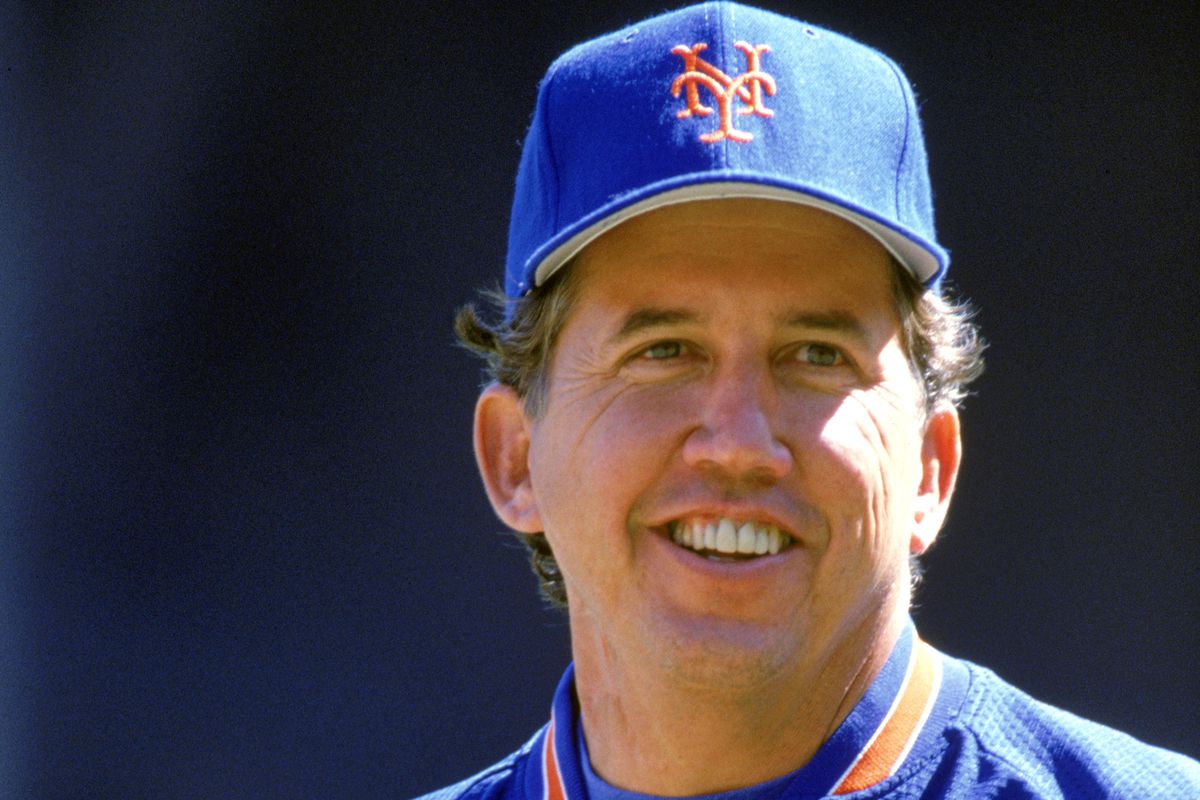
There are 17 pitchers currently on the roster for the Brooklyn Cyclones. Sixteen of them throw overhand. Then there’s Josh Hejka.
The 6-foot-0 right-hander out of Johns Hopkins is a submarine pitcher, a rare breed in baseball today.
He’s also maybe Brooklyn’s most effective relief pitcher so far this season. In five appearances and 5.2 innings pitched Hejka hasn’t given up a run. He’s only allowed four hits and two walks while striking out nine.
“He’s just a unique guy from where he throws, the arm slot being a lot lower, pitching coach AJ Sager said. “The easy thing to say is it’s the angle that he throws with that gives hitters trouble. But the other big part is the pitch execution. He throws strikes from down there, he throws quality strikes from down there, and he throws quality strikes with two or three different pitches. So when you put the whole package together, it works.”
Hejka says he’s added two new pitches for this season, one being what he describes as a harder cutter and the other being a rising slider that is modeled off of Tyler Rogers of the San Francisco Giants.
“Those two new pitches have been huge for me in terms of getting swings and misses and strikeouts, when in the past I was good at getting weak contact but I wasn’t as good at getting strikeouts,” Hejka said. “So there’s more options for me in two-strike counts and to get swings and misses throughout the at-bat.”
s and misses and strikeouts, when in the past I was good at getting weak contact but I wasn’t as good at getting strikeouts,” said Hejka. “So there’s more options for me in two-strike counts and to get swings and misses throughout the at-bat.”
The results have been there too, putting up a K/9 that currently ranks No. 3 on the team. On April 20 against the Hudson Valley Renegades, Hejka was put into the game with the bases loaded and one out in the sixth, asked to protect a one-run lead. He struck out the next two batters, stranding three and keeping Brooklyn in front in a game they would eventually win by one run.

The results have been there too, putting up a K/9 that currently ranks No. 3 on the team. On April 20 against the Hudson Valley Renegades, Hejka was put into the game with the bases loaded and one out in the sixth, asked to protect a one-run lead. He struck out the next two batters, stranding three and keeping Brooklyn in front in a game they would eventually win by one run.
“I prefer pitching in those pressure situations, I feel like I reach a new level of focus and execution when I’m pitching in those situations,” Hejka said. “So coming into that situation the other day with the bases loaded, I just had to get my job done … just trying to use those new pitches I talked about, utilize those pitches to get some swings and misses and strikeouts.”
It was that performance that earned him the MVP chain, which Hejka said is a baseball and chain that has been spray-painted gold and given out to the MVP of the game.
“We gave it to Hejka, he got out of the jam, I think that was the climax of the game,” manager Luis Rivera said. “Everybody was screaming and celebrating him.”
Hejka has picked up a team-leading two holds on the year, one of them coming in that game at Hudson Valley. He also recently pitched a scoreless top of the ninth down one run to set up what would be a Cyclones’ comeback win in walk-off fashion in the bottom of the inning.
“We just feel very comfortable with Josh pitching in tight situations, and he earns that trust when he goes out there and does what he does, and doesn’t seem to let the part of the game or what’s going on in the game affect him,” Sager said.
Hejka started throwing submarine back in high school. Originally a second baseman, he said one of his coaches essentially told him going into junior year that he wasn’t going to get playing time, so if he wanted some, might as well try something new — throwing submarine.
“I appreciated the honesty because I’d rather of known that than gone into the season with a false sense of expectations for playing,” Hejka said. “Two of the guys in front of me ended up not being able to play that year due to injury, so I ended up pitching quite a bit. Had a really good season, ended up being an All-State pitcher and started my college recruiting process.”
It wasn’t an easy transition, to go from throwing overhand to submarine. Hejka recalled how in roughly his first five games he thinks he issued about 10 walks.
He got help from his high school coach and also went to multiple camps over the years to learn how to effectively pitch submarine. He modeled his delivery off Darren O’Day and Joe Smith, both of whom are pitching their 15th season in the big leagues this year.
“Those were the guys that, when I watched video, tended to have the most similar release point and mechanics to me,” Hejka said. “So I’ve definitely spent a lot of time watching slow-motion videos of their pitching mechanics, trying to pick up tips or see if there’s anything that they do that I don’t do.”
Really though, Hejka said it’s all unique. He can pick up tips from watching guys like O’Day or Smith but also Rogers in San Francisco or Adam Cimber in Toronto — helping him mix and match to find what works for him.
The Mets have one other submariner in their system, Tom Hackimer. Hejka said that while he did get to talk to him throughout spring training, he has never actually been teammates with someone else who throws the way he does. That is, in professional ball.
In college, Hejka actually helped teach some of his teammates how to throw submarine.
“There was one guy who was a year older than me who threw overhand, and I helped him learn how to throw sidearm and he ended up having the best season by ERA in Johns Hopkins baseball history,” Hejka said. “So it ended up being very successful for him. And then a couple of my younger teammates, who were struggling to get on the mound, they came to me for some advice on how to drop down, so I worked with them as well.”
However, not having a submariner teammate isn’t necessarily a bad thing, as Hejka pointed out. It can really be used for a competitive advantage.
“I really like the aspect of it where I get to come into a game and I know the hitters haven’t seen anything like that,” Hejka said. “I think that’s a large part of what makes me successful … knowing that I’m so different from a lot of the other pitchers on my team, it’s definitely cool because I know the hitters are going to be uncomfortable.”
Hejka signed with the Mets in 2019 and has had a lot of success throughout his minor league career. In 2021, he even appeared in three different levels of the minors. Most of his time was spent in Brooklyn, but he did appear in six games at Double-A Binghamton and three games at Triple-A Syracuse.
“It was awesome, playing at the Double-A, Triple-A levels it was an awesome experience,” Hejka said. “It was like a drug, honestly.”
Hejka said Double-A is similar to High-A, especially in terms of the approach hitters have at the plate. The main difference is just simply that they hit the ball harder, saying that miss-hits turn into more hits and barrels turn into more extra-base hits.
Triple-A though, that’s an entirely different story.
“Once you get to Triple-A, most of those guys have had considerable amounts of Major League time, and there’s just not a feeling like that,” Hejka said. “Getting to compete against guys that I’ve watched on TV before. Getting to compete with guys that I play with on The Show, the video game. It’s like I said, that feeling is like a drug, getting to play against literally the best players in the world.”
Sager said he thinks it’s important for players to get that exposure in the different levels of the minors, especially to face more experienced hitters.
“I think it helps their confidence, and understand that some of the things we talk about at the lower levels — counts you pitch in, not walking hitters, not getting behind hitters — usually the farther up the ladder you go, you pay a higher price for that,” Sager said. “So sometimes they hear the words, but it always helps to go up and get the experience.”
This season Hejka’s back in High-A, starting the season with Brooklyn again. He has confidence in himself, especially after the experience he gained last year, and the coaching staff has confidence in him.
“I like him,” Rivera said. “We have been using him for tough situations … He’s tough to pick up and he’s been doing a really good job for us. He’s a type of pitcher that is tough to see. He has been doing a really good job.”
The Cyclones will be at home through Sunday, May 1 as they finish their series vs. the Bowling Green Hot Rods. For tickets and promotion information, scan the QR code.

.



